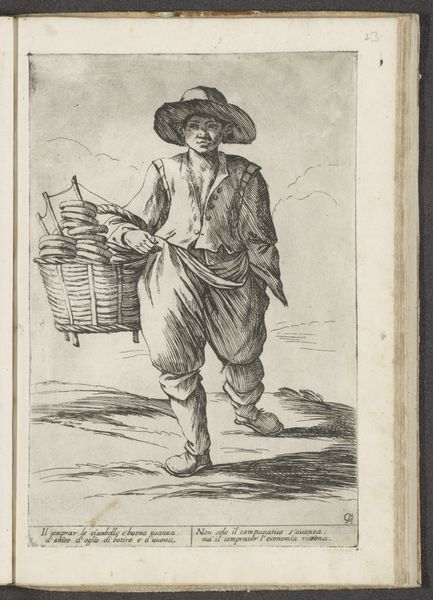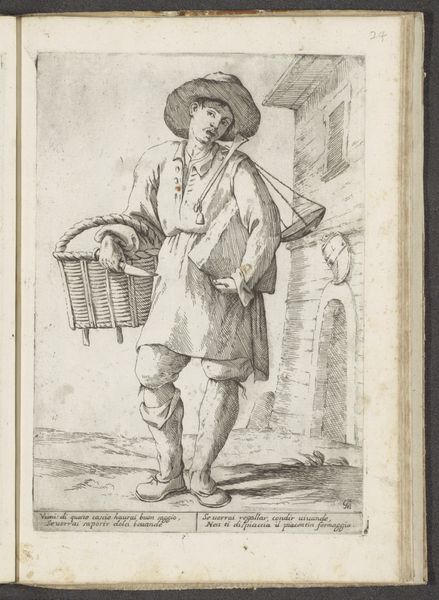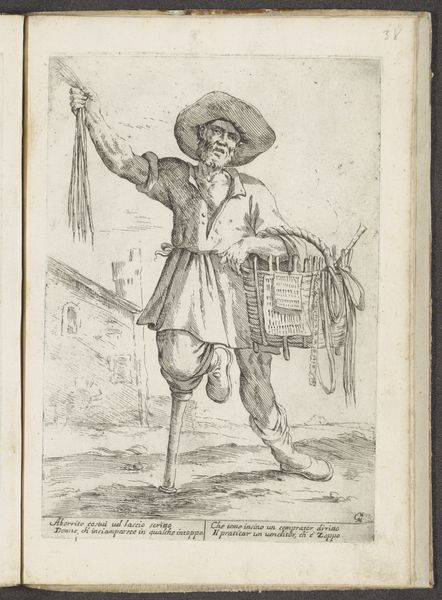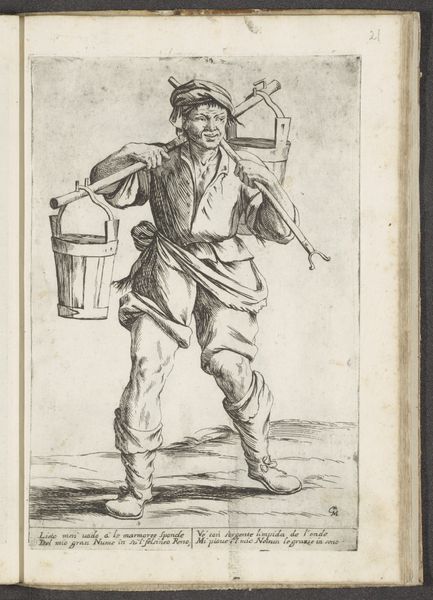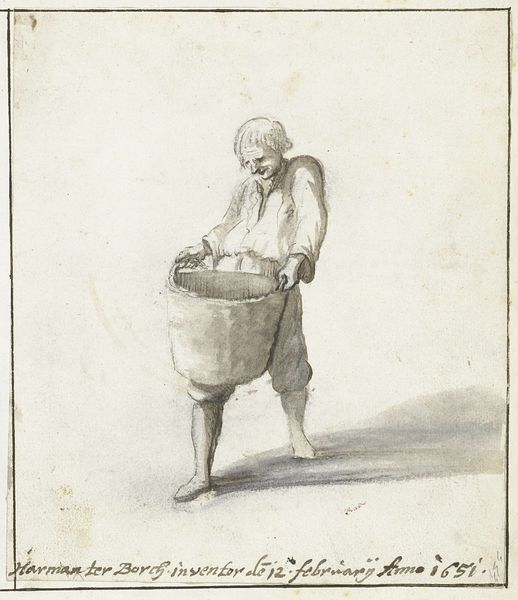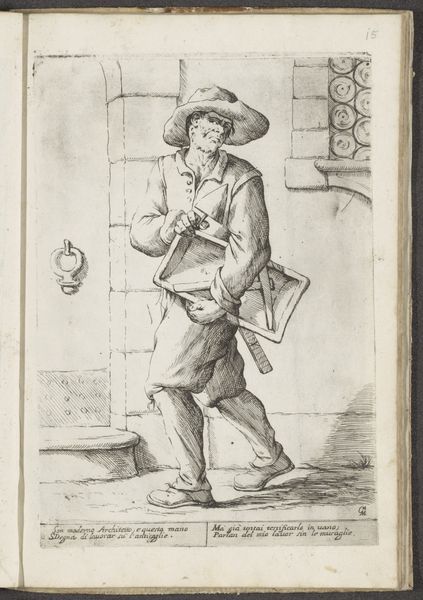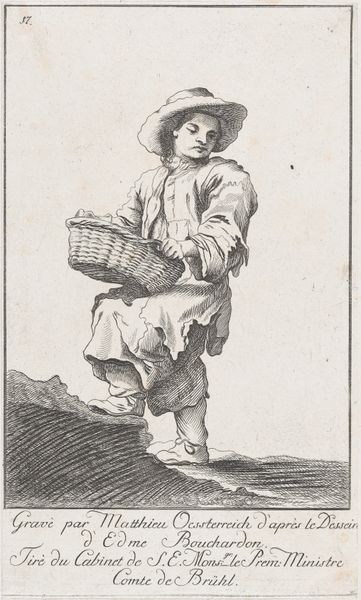
print, etching
#
narrative-art
#
baroque
# print
#
etching
#
figuration
#
genre-painting
Dimensions: height 281 mm, width 195 mm
Copyright: Rijks Museum: Open Domain
Editor: Here we have Giuseppe Maria Mitelli’s “Broodverkoper,” or “Bread Seller,” created around 1660. It’s an etching. The figure, weighed down by his wares, seems almost monumental despite its modest scale. I’m curious – what catches your eye when you look at this print? Curator: Immediately, the contrast between the man’s burden and the apparent symbolism around him strikes me. Look at the rosary beads hanging from his waist, the bread stacked high in the basket like some offering, even the simple jug in his hand. How might these items together reveal the emotional or spiritual state of this vendor? Editor: So, you’re suggesting these aren't just everyday objects, but symbols carrying deeper meaning? Curator: Precisely. In this era, food itself carried weighty significance, both literally and figuratively. Consider bread’s association with sustenance, survival, and even religious communion. And the man himself—does he embody hardship or humble dedication, or perhaps both? The artist presents these as intertwined, reflecting social values of the time. Does the man’s bowed head suggest weariness or humility, do you think? Editor: I see your point. Perhaps it is both! I hadn't thought about the symbolism of the rosary either. So, he’s carrying not only bread, but also a spiritual burden. It definitely makes me see the work in a new light. Curator: Indeed. Mitelli invites us to look beyond the surface and contemplate the intricate web of meanings embedded in everyday life. It’s a beautiful way to represent the connection between our physical and spiritual existence.
Comments
No comments
Be the first to comment and join the conversation on the ultimate creative platform.


